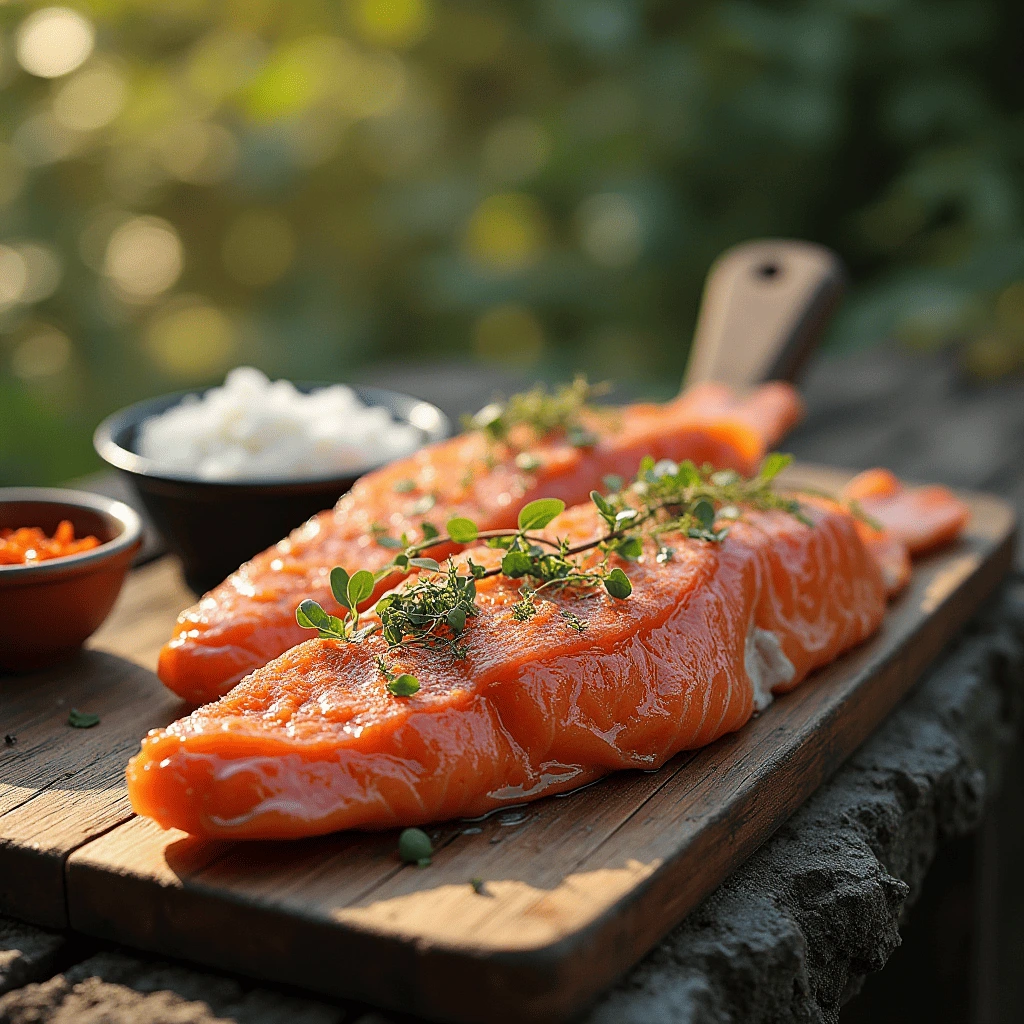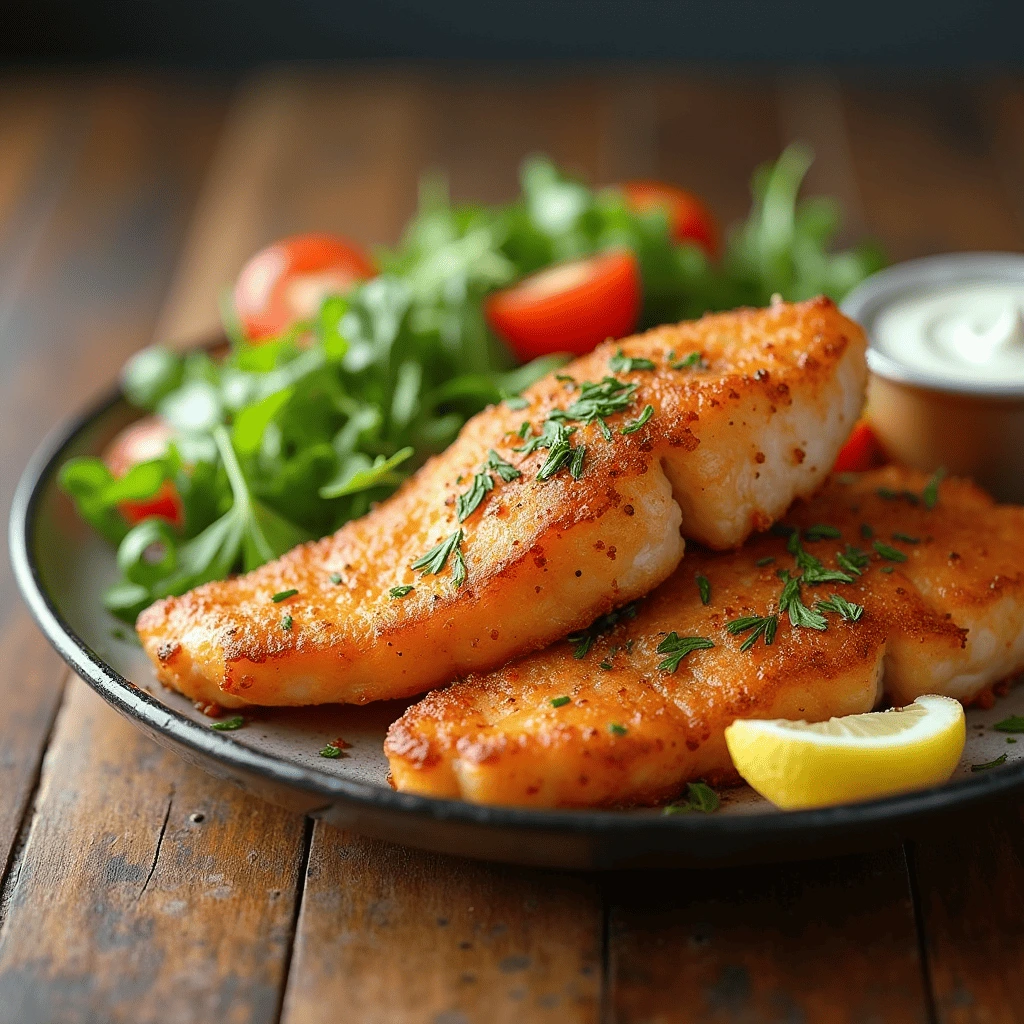Learning how to cook fish for beginners can be fun and satisfying. It gets even better when the flavors are right.
If you’re a home cook, simple fish recipes are a great way to improve your skills.
The right recipe makes a huge difference. A great fish dish can be both healthy and delicious.
Mastering fish cooking gives you more meal options. You can make fast dinners or special meals for guests.
It’s a skill that will serve you well in many situations.
Key Takeaways
- Mastering the art of cooking fish can elevate your culinary skills.
- A well-crafted recipe is essential for a delicious and nutritious meal.
- Cooking fish perfectly opens up a variety of meal options.
- Simple meals can be both flavorful and healthy.
- Experimenting with different recipes can help you find your favorite dishes.
- Using the right ingredients is key to achieving perfect results.
How to Cook Fish for Beginners: Understanding Fish Types and Preparation
The world of fish is full of variety. Knowing the differences can make your cooking better. Fish can be sorted in many ways. It’s key to pick the right type for your recipe and use the freshest ingredients, just like with homemade fish food.
What You Need to Know About Different Fish Types for Beginners
White fish, like cod and tilapia, taste mild and are flaky. They’re great for light dishes and often used in fish food recipes. Oily fish, such as salmon and mackerel, have a strong flavor and lots of omega-3s. They’re best for dishes needing a bold fish taste.
Beginner-Friendly Tips for Selecting Fresh Fish
Freshwater fish, like trout, come from rivers and lakes. They taste cleaner and are firmer. Saltwater fish, including sea bass and halibut, come from oceans and seas. They have a richer flavor because of their salty home.
How to Select Fresh Fish for Home Cooking
To find the freshest fish, check for clear eyes, red gills, and a firm feel. The fish should smell like the sea, not too fishy. When buying fish for recipes or fish food ingredients, these tips will help you get the best.
Essential Tips: How to Cook Fish for Beginners at Home
Preparing fish for cooking is key to a great dish. Whether it’s a simple, easy fish food recipe or something more, knowing these steps is important.
Basic Fish Prep Techniques for New Cooks
First, clean and scale your fish. Rinse it under cold water and then use a scaler or a knife to remove scales.
Don’t forget to clean the cavity well. This removes innards and bloodlines, which can make the fish taste bitter if left in.
How to Clean and Scale Fish: A Beginner’s Guide
Filleting fish might seem hard, but it gets easier with practice. Start by cutting behind the gills and along the spine, then remove the fillet carefully.
Use a sharp knife for smooth cuts. Remove pin bones with tweezers for a better taste.
Filleting Basics for First-Time Fish Cooks
Marinating fish adds flavor. Mix olive oil, lemon juice, and herbs for a simple marinade.
Season the fish just before cooking. Use salt, pepper, and spices to bring out the natural flavors without overpowering the dish.
Easy Marinating and Seasoning Tips for Beginners
Right tools make fish prep easier. You’ll need a good filleting knife, a scaler, and tweezers for pin bones.
Getting these tools will make cooking fish more fun and successful. It lets you focus on making tasty meals.

Cooking Methods for Beginners: How to Cook Fish to Perfection
Whether you’re a seasoned chef or a home cook, knowing the best ways to cook fish is key. Fish can be cooked in many ways, each bringing out different flavors and textures.
Pan-Frying Fish for Beginners: Crispy Results Every Time
Pan-frying is great for getting a crispy fish skin. Start by heating a skillet over medium-high heat and add a bit of oil. Season the fish with your favorite herbs and spices before cooking it in the skillet, skin side down. Cook for 4-5 minutes on the skin side, then flip and cook for another 3-4 minutes, or until it’s fully cooked.
Tip: Use a non-stick skillet to prevent the fish from sticking and to make it easier to flip.
Baking Fish for Beginners: A Simple, Healthy Cooking Method
Baking is a healthier option that makes fish tender and flaky. Preheat the oven to 400°F (200°C). Season the fish, then place it on a parchment-lined baking sheet.. Drizzle with olive oil and bake for 10-12 minutes per pound, or until it’s cooked through and flakes easily with a fork.
For an added flavor, you can top the fish with lemon slices and herbs before baking.
Grilling Fish for Beginners: Master the Smoky Flavor
Grilling fish adds a smoky flavor that’s hard to beat. To grill fish, preheat your grill to medium-high heat. Brush the fish with oil and season with salt, pepper, and any other spices you like. Place the fish on the grill, skin side down if it has skin, and cook for 4-6 minutes per side, or until it’s fully cooked.
Tip: Keep the grill clean and brush the grates with oil to prevent the fish from sticking.
Poaching Fish for Soft, Moist Texture
Poaching is a moist-heat method that results in delicate, moist fish. To poach fish, bring a liquid (such as water or broth) to a simmer, then reduce the heat to a low setting. Add the fish to the liquid and cook for 8-10 minutes, or until it flakes easily with a fork. You can add aromatics like lemon and herbs to the poaching liquid for extra flavor.
This method is great for delicate fish fillets that might break apart with other cooking methods.
Simple and Delicious Fish Recipes for Beginners
If you’re new to cooking fish, you’re in the right place. These simple and delicious recipes are designed just for you. Cooking fish can be a delightful experience with the right guidance. Here, you’ll find a variety of natural fish food recipes that are not only healthy but also bursting with flavor.
How to Cook Fish for Beginners: Easy Recipes You’ll Love
This recipe is a perfect example of a natural fish food recipe that requires minimal ingredients and preparation time. To make it, you’ll need:
- 4 white fish fillets (such as cod or tilapia)
- 2 cloves of garlic, minced
- 2 lemons, juiced
- 2 tbsp olive oil
- Salt and pepper to taste
- Fresh parsley, chopped (optional)
Simply season the fish with salt, pepper, and garlic, then drizzle with lemon juice and olive oil. Bake in a preheated oven at 400°F (200°C) for 12-15 minutes or until cooked through. Garnish with parsley for a fresh touch.
Beginner-Friendly Fish Recipes: From Lemon Garlic White Fish to Grilled Salmon
For a heartier option, try this Mediterranean-inspired salmon recipe. It’s a great way to enjoy a natural fish food recipe with a rich flavor profile.
| Ingredients | Quantity |
| Salmon fillets | 4 |
| Olive oil | 1/4 cup |
| Lemon juice | 2 tbsp |
| Chopped olives | 1/2 cup |
| Chopped tomatoes | 1 cup |
| Fresh oregano | 2 tbsp |
Mix olive oil, lemon juice, olives, tomatoes, and oregano in a bowl. Add the salmon fillets to a baking dish. Top with the Mediterranean mixture.. Bake at 375°F (190°C) for 15-20 minutes or until the fish is cooked to your liking.

Soy-Ginger Glazed Fish for Quick Meals
This recipe brings an Asian flair to your dining table with a sweet and savory soy ginger glaze. It’s an easy and delicious way to enjoy fish.
- 4 fish fillets (any white fish works well)
- 1/2 cup soy sauce
- 1/4 cup honey
- 2 tbsp grated ginger
- 2 tbsp olive oil
Whisk together soy sauce, honey, and ginger in a bowl. Brush the mixture onto both sides of the fish fillets. Heat olive oil in a pan over medium-high heat and sear the fish until golden brown on both sides. Finish cooking in the oven if necessary.
Baja Fish Tacos with Fresh Salsa
For a fun twist, try making Baja-style fish tacos. This recipe is perfect for those who enjoy a bit of spice and freshness in their meals.
To make the fish:
- 1 lb cod or tilapia fillets, cut into small pieces
- 1/2 cup lime juice
- 1 tsp cumin
- 1/4 tsp cayenne pepper
Marinate the fish pieces in lime juice, cumin, and cayenne pepper. Then, pan-fry until cooked through. Serve in tacos with your favorite toppings and a fresh salsa made with diced tomatoes, onions, cilantro, and lime juice.
Final Thoughts: Mastering How to Cook Fish for Beginners
Learning to cook fish can really improve your cooking skills. Knowing about different fish types, how to prepare them, and various cooking methods helps. This way, you can make tasty and simple meals.
Choosing the right fish food recipe is important for great cooking. Whether you’re frying, baking, grilling, or poaching, the right ingredients and techniques matter. Try out different flavors and recipes, like lemon garlic white fish or Mediterranean-style baked salmon, to find your favorites.
With time and practice, you’ll get better at cooking fish perfectly. So, be creative in the kitchen. Enjoy finding new fish food recipes that will please your taste buds and impress others.
FAQ
What’s the best way to get started if I’m new to cooking fish?
The best way is to follow a step-by-step guide focused on how to cook fish for beginners, starting with simple recipes and easy cooking methods like baking or pan-frying. What are the benefits of making homemade fish food?
Making homemade fish food lets you choose what goes into it. This ensures your fish get a healthy diet. You can also adjust the recipe to fit your fish’s needs.
What are the essential fish food ingredients?
Key ingredients include protein sources like fish meat, shrimp, and spirulina. You also need vegetables and supplements. The exact mix depends on your fish’s type.
How do I create an easy fish food recipe?
Start with a mix of fish fillet, peas, and carrots. Add supplements and nutrients as needed. Make sure the recipe meets your fish’s dietary needs for a balanced diet.
Can I use a natural fish food recipe for my fish?
Yes, natural recipes are a good choice. They promote healthy digestion and well-being. Just check the ingredients to ensure they’re safe for your fish.
How often should I feed my fish homemade fish food?
Feeding frequency depends on your fish’s type, age, and needs. Feed them 2-3 times a day. Give only as much as they can eat in a few minutes.
What are some tips for storing homemade fish food?
Store it in airtight containers or freezer bags in the freezer. This keeps the food fresh and nutritious. Thaw what you need when it’s time to feed your fish.

